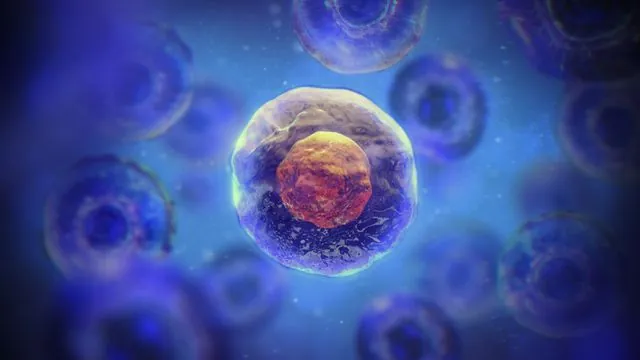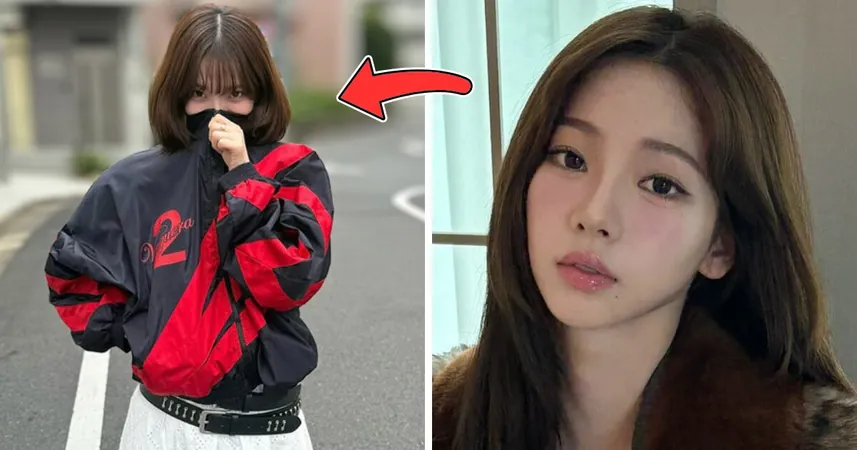
Unlocking Quantum Potential: Overlapping Moiré Lattices in 2D Materials
2025-06-03
Author: John Tan
A Breakthrough in Quantum Materials
A groundbreaking study has unveiled a revolutionary two-dimensional (2D) quantum material platform by superimposing moiré lattices, setting the stage for exciting advancements in programmable quantum devices and next-gen electronics.
What Are Moiré Lattices?
The phenomenon known as the "moiré effect" occurs when two periodic patterns overlap, producing complex designs that can drastically modify how electrons behave in materials. Think of it as creating mesmerizing wave-like effects seen in overlapping fabrics or unique grid patterns on screens.
The Science Behind the Study
Led by Professor Hyobin Yoo from the Department of Materials Science and Engineering, this collaborative research with experts from the Korea Institute for Advanced Study and Ewha Womans University represents the first detailed examination of how different moiré lattices interact at an atomic level in a trilayer graphene setup. This research enhances the understanding of electron behavior through intricate atomic arrangements.
Revolutionizing Electronic Properties
Unlike traditional materials with fixed atomic structures, 2D materials like graphene can achieve remarkable adjustments in electron properties by simply stacking layers with slight twists, resulting in newly formed superlattices known as moiré lattices. This opens up revolutionary avenues for precisely controlling electronic flow, making these structures prime candidates for quantum technology.
The Next Level: Moiré-of-Moiré Structures
While past work primarily focused on single moiré structures, this research embraces the complexity brought by stacking multiple graphene layers. This leads to the emergence of "moiré-of-moiré" lattices, enabling independent tuning of multiple moiré periods, significantly boosting the control over electronic states.
Discoveries and Innovations
Utilizing high-resolution transmission electron microscopy (TEM), researchers observed unique lattice patterns—including novel configurations like triangular, kagome, and hexagram motifs—arising from self-organizing atomic arrangements. These discoveries highlight the importance of weak interactions across non-neighboring layers, reshaping our understanding of how such complex structures form.
Mapping the Future of Quantum Materials
The team crafted a "structural phase diagram" that illustrates how different lattice domains arise based on twist angles. This invaluable tool serves as a roadmap for future designs in quantum materials leveraging these intricate multi-moiré structures.
A Leap Towards Programmable Materials
Professor Yoo emphasized that this research redefines moiré structures—not just as aesthetic patterns, but as instrumental frameworks for engineering electronic states and atomic interactions. The insights gained here pave the way for developing materials whose properties can be dynamically adjusted via external stimuli, heralding a new era in electronic and quantum technologies.
Gearing Up for the Future
With this significant leap in understanding and manipulation of complex lattice structures, we stand on the brink of a transformation in how we conceptualize and build the next generation of electronic and computational devices. The future beckons with promises of materials that can adapt and evolve, leading towards smarter technological solutions.




 Brasil (PT)
Brasil (PT)
 Canada (EN)
Canada (EN)
 Chile (ES)
Chile (ES)
 Česko (CS)
Česko (CS)
 대한민국 (KO)
대한민국 (KO)
 España (ES)
España (ES)
 France (FR)
France (FR)
 Hong Kong (EN)
Hong Kong (EN)
 Italia (IT)
Italia (IT)
 日本 (JA)
日本 (JA)
 Magyarország (HU)
Magyarország (HU)
 Norge (NO)
Norge (NO)
 Polska (PL)
Polska (PL)
 Schweiz (DE)
Schweiz (DE)
 Singapore (EN)
Singapore (EN)
 Sverige (SV)
Sverige (SV)
 Suomi (FI)
Suomi (FI)
 Türkiye (TR)
Türkiye (TR)
 الإمارات العربية المتحدة (AR)
الإمارات العربية المتحدة (AR)